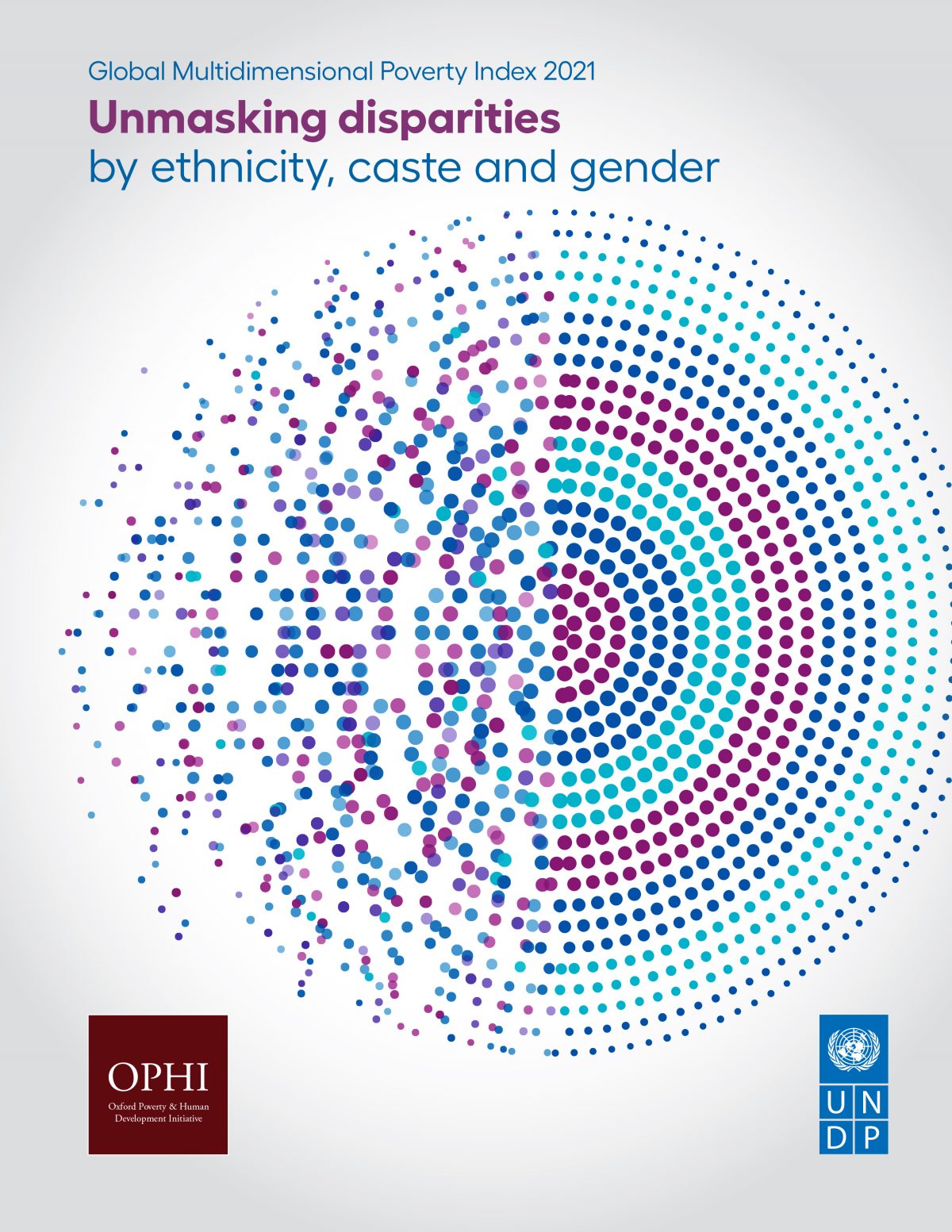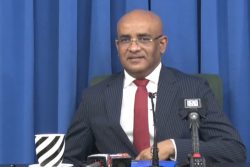Disparities in multidimensional poverty among ethnic groups in Guyana are consistently high but across the four hinterland regions there is a greater representation in the Amerindian community.
This is according to a new analysis on global multidimensional poverty released on October 7, 2021. It pointed out that whereas Amerindians comprise 10.51 percent of the population they account for 63% of the multidimensionally poor in the country.
The global Multidimensional Poverty Index (MPI) was produced by the United Nations Development Programme (UNDP) and the Oxford Poverty and Human Development Initiative (OPHI) and measured poverty by considering various deprivations experienced by Amerindians in their daily lives, including poor health, insufficient education and a low standard of living. The report examines the level and composition of multidimensional poverty across 109 countries covering 5.9 billion people and presents an ethnicity/ race/caste disaggregation for 41 countries with available information, including Guyana. The survey for Guyana was conducted in 2019/2020.
In the global MPI, a person is identified as multidimensionally poor or MPI poor if they are deprived in at least one third of the weighted MPI indicators. In other words, a person is MPI poor if the person’s weighted deprivation score is equal to or higher than the poverty cutoff of 33.33%. The UN Index indicates that statistically 37.5 of urban populations and 39.2 of hinterland populations are multidimensionally poor. It also shows how, within a country, multidimensional poverty among different ethnic groups can vary immensely.
In Latin America, indi-genous peoples are among the poorest. In Guyana, Amerindians account for 71,000 or 10.51 percent of the population but represent 63% of the multidimensionally poor. The press release issued yesterday by the United Nations Development Programme (UNDP) on the report said that the finding “resonates” with a recent concern expressed by President Irfaan Ali, when he assured Indigenous Leaders in Region 9 that his Government will “invest more in Amerindian communities because there is a gap between you and the other communities in this Country” and that this gap will be bridged. The MPI disparity for Guyana overall and Amerindians as a subset of the overall population was where Guyana had a value of 0.007. The following was based on the 2019/2020 data:
● The four hinterland regions: 1,7,8 and 9 are home to 80% of Amerindians of Guyana.
● All four hinterland regions rank high on the MPI scale either being equal to or greater than 0.05 being the baseline poverty index of the MPI. The four hinterland regions rankings are – Region 8 (0.08), Regions One, Seven and Nine (0.05 equally)
● 1.7 percent (13,000 in 2019) of the overall population are multidimensionally poor but 11.27 percent of the indigenous population (8 thousand people in 2019) are multidimensionally poor (or lacking in at least one third of the weighted MPI indicators which is the person’s weighted deprivation score is equal to or higher than the poverty cutoff of 33.33 %.)
● 6.5 percent of the overall population (51 thousand people in 2019) are classified as vulnerable to multidimensional poverty.
The intensity of deprivations, which is the average deprivation score among people living in multidimensional poverty, is 38.8 percent for the overall population but 40 percent for Amerindian populations with 33.33% being the poverty cutoff.
The MPI value (for Guyana) is 0.007, in comparison Belize and Suriname have MPI values of 0.017 and 0.011, respectively.
The data paint a grim picture of what is the day-to-day reality of life for multidimensionally poor people universally. The index was also weighed against each of the Sustainable Development Goals. In the Guyana context, contribution of deprivation in dimension to the Global multidimensional (MPI) amongst the Amerindian population provided the following indicators:
Health (Nutrition) – A member of a household below 70 years of age for whom there is data of undernutrition (26%),
Drinking water – Access to drinking water within a 30 minute roundtrip by walking from home (5.3%),
Electricity – The household has no electricity (8.3%),
Child mortality – where a child below 18 years old has died 5 years preceding the survey (1.7%),
Years of schooling – No eligible members of a household has completed 6 years of school attendance (10.8),
School attendance – Any school-aged child who is not attending school up to the age at which he/she would complete Class 8 (8.7%),
Cooking fuel – A household cooks using solid fuel, such as dung, agricultural crops, shrubs, wood, charcoal or coal (9.8%),
Sanitation – The household has unimproved or no sanitation facility or it is improved but is shared with other households (6.5%),
Housing – The household has inadequate housing materials in any of the three components: floor, roof or walls (11.4%), and
Assets – 11.5% of Amerindians have access to 7 of 8 assets (e.g. radio, television, telephone, computer, animal cart, bicycle, motor-bike, refrigerator and do not own a car).
The report further noted the following: “The COVID-19 pandemic has eroded development progress around the world, and we are still grappling to understand its full impacts.” “This year’s Multidimensional Poverty Index (MPI) reminds us of the need for a complete picture of how people are being affected by poverty, who they are and where they live, if we are to build forward better from this crisis and design effective responses that leave no one behind.”
Though multidimensional poverty remains high, there were encouraging signs of progress in some countries, at least until the onset of COVID-19. Of the 80 countries and five billion people for which there is data over time, 70 reduced MPI in at least one period, with the fastest changes coming from Sierra Leone (2013–2017), followed by Togo (2013/2014–2017). Some countries saw the fastest absolute reductions in their poorest regions—helping to fulfil their pledge to leave no one behind. These areas include North Central in Liberia (2013–2019/2020) and Province 2 in Nepal (2016–2019). “Achieving a future where all people enjoy core capabilities they value and have reason to value requires the global community to fix the structural inequalities that oppress and hinder progress. Disaggregating multidimensional poverty data by ethnicity, race, caste and exploring gendered and intrahousehold patterns unmasks disparities and forms a vital guide to policymakers to leave no one behind in the last decade for action” says Sabina Alkire, Director of OPHI at the University of Oxford.
The report noted that while complete data on COVID-19’s impacts on the MPI are not yet available, the pandemic has exposed cracks in social protections systems, education, and workers’ vulnerability around the world. These cracks, the report shows, are deepest in countries with higher levels of multidimensional poverty. For instance, millions of children around the world stopped attending school during the pandemic but that disruption of formal education was more prevalent in higher MPI countries. The report pointed to experiences from past health emergencies that suggested that many of these children may never go back to school. The full data and publication, including Guyana specific Country Note, Statistical Data and Disaggregation by Ethnic Groups can be accessed at the following link: http://hdr.undp.org/en/2021-mpi and https://ophi.org.uk/multidimensional-poverty-index/










